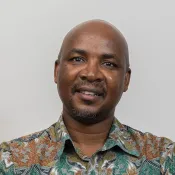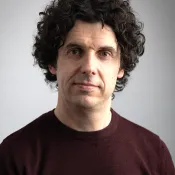The Scale and Scope of Informal Volunteerism Measurement
About the discussion group
Welcome to our online discussion on the Knowledge Portal! We are delighted to have you join us as we delve into the important and often overlooked topic of informal volunteerism measurement. Informal volunteerism, characterized by spontaneous, unstructured acts of kindness and community support, plays a vital role in strengthening our societies. However, capturing the true scale and scope of these activities presents a unique set of challenges.
Why This Topic Matters:
Informal volunteerism encompasses a wide range of activities, from neighbors helping each other with daily tasks to community members organizing grassroots initiatives. Unlike formal volunteerism, which is often tracked through organized programs and institutions, informal volunteerism is harder to quantify. Yet, understanding its impact is crucial for several reasons:
- Community Development: Informal volunteerism can foster collective responsibility, social cohesion and resilience.
- Policy and Program Design: Accurate measurement can inform policies and programs, ensuring they address the real needs and contributions of volunteers.
- Recognition and Support: Highlighting the extent of informal volunteerism can lead to better recognition and support for those who contribute to their communities in informal ways.
Discussion Goals:
In this discussion, we aim to achieve the following:
- Highlight Importance: Discuss why measuring informal volunteerism is essential and what benefits it can bring to individuals, communities and organizations.
- Identify Challenges: Explore the difficulties in measuring informal volunteerism, such as underreporting and lack of standardized metrics.
- Share Solutions: Exchange effective methods, tools, and innovative approaches for capturing the scale and scope of informal volunteer activities.
- Utilize Data: Discuss how data on informal volunteerism can be generated and used to enhance community programs, policies, and volunteer initiatives.
- Learn from Experiences: Share case studies and personal experiences that highlight the impact of measuring informal volunteerism.
Your insights, experiences, and innovative ideas are invaluable to this conversation. Together, we can develop a deeper understanding of informal volunteerism and find ways to measure and support these vital contributions to our communities.
Looking forward to your participation.

I'd like to open this with a comment on language. In my experience the terms 'formal' and 'informal' volunteering have not been very helpful. For example, during the COVID-19 pandemic many previously heavily regulated and bureaucratic forms of volunteering dropped requirements, whereas ad hoc neighbourhood groups quickly instituted specific bureaucratic requirements. I summarised some findings in a blog in 2021
https://www.uea.ac.uk/web/groups-and-centres/institute-for-volunteering-research/blog/-/asset_publisher/zPfXZQ83PXhv/content/the-mutual-aid-response-during-the-pandemic-three-very-different-things-we-learned?_com_liferay_asset_publisher_web_portlet_AssetPublisherPortlet_INSTANCE_zPfXZQ83PXhv_redirect=https%3A%2F%2Fwww.uea.ac.uk%3A443%2Fweb%2Fgroups-and-centres%2Finstitute-for-volunteering-research%2Fblog%3Fp_p_id%3Dcom_liferay_asset_publisher_web_portlet_AssetPublisherPortlet_INSTANCE_zPfXZQ83PXhv%26p_p_lifecycle%3D0%26p_p_state%3Dnormal%26p_p_mode%3Dview%26_com_liferay_asset_publisher_web_portlet_AssetPublisherPortlet_INSTANCE_zPfXZQ83PXhv_cur%3D2%26_com_liferay_asset_publisher_web_portlet_AssetPublisherPortlet_INSTANCE_zPfXZQ83PXhv_delta%3D10%26p_r_p_resetCur%3Dfalse%26_com_liferay_asset_publisher_web_portlet_AssetPublisherPortlet_INSTANCE_zPfXZQ83PXhv_assetEntryId%3D4809825#TitleBar
and in a working paper
https://www.uea.ac.uk/documents/96135/2802691/IVR+WORKING+PAPER+Mutual+Aid+v3+11.04.2021+jlg.pdf/29391b33-90d1-924b-07ed-77b640a9f83c?t=1618310383464
Sorry about the long URLs.
The following excerpt about mutual aid which would be a type of 'informal' volunteering, illustrates, I believe, the unhelpful overlaps between 'informal' and 'formal':
"What begun for many volunteers as a beautiful and empowering experience, ended for some feeling overwhelmed or overburdened or disillusioned by the disagreements between different political factions and existing voluntary organisations. Non-hierarchical working was challenged when polarised positions and ideologies that did not feature at the beginning, began to re-emerge as the most immediate need receded. At its worst volunteers experienced the effects of bad neighbours, as they felt bullied online. And so, once the first immediate desperate need had been responded to, volunteers began to remove themselves from the movement."
My suggestion for debate is, we drop the terms 'formal' and 'informal' volunteering altogether but be clear about the characteristics of the forms of volunteering we speak of. In my experience, very few are entirely without organisation and bureaucracy, but how power and agency play out differs greatly.
Looking forward to exploring this more.
Many thanks and kind regards, Jurgen

In reply to (No subject) by Jurgen Grotz
Your ideas are thought provoking, especially in your idea that “the terms 'formal' and 'informal' volunteering have not been very helpful” and we should “drop them all together but be clear about the characteristics of the forms of volunteering we speak of.” I agree with this suggestion, partly because these nomenclatures are laden with power and assigned values (e.g. informal = not worth investing in while formal is desired irrespective of contexts). In addition, I wish to offer some practical examples that CEMEFI (Dr. Jacqueline Butcher) has used in Mexico to deal with complex conceptual issues but has offered clarity on form, by asking survey respondents to describe their mutual aid assistance type of activities they engage in, as well as the type of assistance and help they give in their communities in different contexts and organisations, as opposed to asking whether they volunteer. This way they have been able to capture the entire spectrum of forms and characteristics of volunteering.
Regards,
Jacob

In reply to (No subject) by Professor Jacob Mati
Thanks for sharing Jaqueline's research. I heard you speak in Antwerp.
Best wishes, Jurgen

Regarding the terms "formal" and "informal" volunteering: These terms (formal and informal) have long been customary for use, but I believe that it is still better to be guided by the terms "direct" and "organizational" volunteering, as provided for in the international standards of the ILO
All the best, Galina

In my opinion it is normal to continue using the terms "formal" and "informal" in everyday speech, however, in the professional lexicon it is important to use the terms corresponding to the International Classification of Employment Status (ICES-18), which defines two types of volunteers, depending on the activity: organization-based or individual (self-employed):
Organizational volunteering - volunteering carried out on the basis of or through organizations that include market and non-market units;
Direct volunteering - volunteering carried out by volunteers on their own initiative for the benefit of households (e.g. friends, neighbors, strangers), community, nature, other than the volunteer's own household.
Beneficiaries of volunteer work: there are 4 beneficiaries: individuals, organizations, society and nature.
Galina

In reply to (No subject) by Galina.Bodrenkova
Thank you for these useful insights, especially for international comparative purposes. I think this, if thought through carefully and reviewed to reflect different contexts, we can collect data on the entire spectrum of volunteering.
Thanks,
Jacob

According to the official data of state statistics for 2018, 2020, 2022, the involvement of volunteers amounted to: for 2018 - 1527 thousand people, of which 1190 thousand people participated in direct volunteering, which is 77.93%; for 2020 - 1870 thousand people, of which 1590 - in direct volunteering (85.02%); for 2022: 2701 thousand people, of which 2068 thousand people. - in direct volunteering (76.56%). Reference to the annual compilations of Rostatistics.
Range of activities by types of work: (I will cite those types that are included in the official questionnaire of the survey within the framework of the sample labor force survey):
Social work (providing any unpaid assistance to persons outside one's own household - the elderly, children, the disabled, victims of natural disasters, cooking and serving meals, transporting people, etc.).
Improvement and cleaning of the territory;
Environmental projects (cleaning forests, fields and rivers, planting trees);
Restoration work, construction, repair;
Agricultural work (working on farms and in the fields):
Fundraising for charity or other social projects;
Organization of sports, cultural and other events
Helping animals
Search for missing people
Participation in educational institutions, public, religious and other non-profit organizations, clubs, unions
Providing free medical, legal assistance, counseling, unpaid classes, trainings, consultations
and other
Thus, we can clearly see: informal volunteering covers a wide range of types of volunteer work demanded by society and the state, the number of participants of which is several times higher than the number of volunteers participating formally through organizations.
I would like to say right away that the reasons for the apparently low level of volunteer participation through organizations, given by the results of the workforce survey, is a separate topic for research (we have also researched it), so we do not touch upon them here.
Now about the problems that arise in connection with the presentation of quantitative data on formal and informal volunteering: it should be noted that in the officially published data for government agencies and for the public, only the total number of volunteers is provided, including both formal and informal, without distinguishing them separately.
Overall conclusion: in Russia, the methodology of the sample labor force survey has introduced and applies the tools for measuring direct volunteering, which are in line with ILO recommendations, and which, it should be noted, require further improvement in accordance with the new ILO and UNV recommendations. At the same time, the problem is that the statistics of direct volunteering, which significantly exceeds the statistics of formal volunteering, are actually hidden and are not presented separately from the data of organizational volunteering neither in the state authorities nor in the society. This is an important problem that requires the attention of all stakeholders.
I look forward to receiving your feedback
Thank you very much, Galina

Thank you for your message and opinion. I would like to continue the topic you raised. I have carefully read your proposal regarding the abandonment of the terms formal/informal volunteering and the use instead of them of "clearly designate the characteristics of the forms of volunteering that we are talking about".Please give an example of the characteristics of the forms that you mean. Thank you.
At the same time, I would like to supplement and develop my opinion regarding these issues.I agree with you that it is time to abandon the use of the terms formal/informal (at least in scientific circulation), for the following reasons. From my research experience, one of the reasons for this is that these terms can be interpreted with different meanings (I will give an example below).
And the main (weighty) justification for this, consisting in maintaining a uniform understanding of these terms, is contained in the ILO proposal. The idea of the ILO/UNV is to designate these terms as "direct volunteering" (carried out directly by volunteers without connection to any formal organization) and "organizational" (carried out through an organization or on the basis of an organization). At the same time, an important argument of the ILO/UNV is that volunteering has only two types, although there can be many forms, types and their characteristics.
I will give an example. Some researchers sometimes use and promote the term "helping behavior", believing that this is a separate type of volunteering, implying individual help to neighbors, friends, animals, nature, etc. But according to the definition of the ILO/UNV, this is "direct volunteering", and the term "helping behavior", as I believe, is only one of the characteristics of direct volunteering.
I will be glad to continue our discussion.
Many thanks, Galina

In reply to (No subject) by Galina.Bodrenkova
I think the last UNV SWVR2022 report on Building Equal and Inclusive Societies is helpful to look at forms. I know, it does use the term 'informal' volunteering on page 53. But the it goes on to cover Guthis and Barghars in Nepal, and other case studies from Ecuador, Democratic Republic of the Congo, Tunisia and Kyrgystan. In each of those it considered agency, voice, experience and inclusion. Level of agency and voice of an individual might be reflected in the formality of a volunteering opportunity, but it can vary across all levels of formality. The subsequent chapters provide case studies from more nations looking at co-production and social innovation. The level of formality does not necessarily determine those aspects, so again, I suggest other typologies might be more helpful.
My second comment is about the ILO conceptualisation of volunteer involvement. My contention is that there is possibly a sharp divide between volunteer involvement conceptualised and measured as unpaid labour, and volunteer involvement that is conceptualised around the choices individuals make and can make. It is unsurprising that ILO, the International Labour Organisation, thinks of volunteer involvement around 'labour' and how that is measured. I'd rather not. And that's where levels of agency and voice, come in, by maybe providing more helpful typologies.
I understand that Tapiwa and his colleagues are looking at an index, I suggest to look beyond the conceptualisation and description of volunteering as unpaid labour.
Sorry, long reply.
Best wishes, Jurgen

It should be noted that direct (informal) volunteering is one of the components of the universal phenomenon of volunteering and is important for the evaluation of volunteering in general. Quantitative statistical indicators and qualitative characteristics of direct volunteering allow to measure more accurately the contribution of volunteers on the scale of the studied territory (local, national or global) and, therefore, to present more clearly the overall picture of the state of volunteering in the World. On the other hand - studying the quantitative and qualitative sides of informal volunteering in their interrelation allows to make the phenomenon of direct volunteering more open to society, which is not yet receiving the attention in society and in the world it deserves.

This discussion comes at a time when the United Nations Volunteers (UNV) is leading sector-wide consultations and evidence-brokering on the scale and scope of volunteer contributions to peace, development, and humanitarian efforts and by default to the Sustainable Development Goals. The next edition of the volunteer sector flagship report in 2025 is predicated on the theme of volunteer work measurement and in addition, a volunteer index is being constructed.
The discussion is not new, but it has persistently occupied space in the debate on measurement and impact of volunteer contribution as various stakeholders-practitioners, academics, and scholars continued to ask pertinent questions. They want to understand better how to plan (if at all possible) and anticipate the spontaneous intervention of informal volunteering to the nexus of peace, development, and humanitarian context.
Because of the persistent interest (call it anxiety) to quantify and pin down evidence on the impact of volunteering on policymaking, use, and appropriation in pursuits for social change, applying a common approach to measuring how formal and informal volunteering is probably urgent in our time.
While many organizations including over 70 countries globally, have already measured the scale and scope of volunteer contributions to social and economic development (using different tools and methodologies) there is still contestation for a standard approach.
Without pre-empting the discussion, this online exchange is expected to unpack ways of how we can better understand informal volunteering, proffer pathways to quantify, and even legitimize the need to measure a voluntary action that sometimes happens between neighbors without any form of invitation and documentation.
However, I cannot leave without signposting my own viewpoints, apparently also elaborated in some of the links that Dr Grotz has provided.
Starting with the fundamentals, what does informal volunteerism refer to? From practice, it is the voluntary action individuals undertake outside of formal structures, often driven by personal motivations, urgent need for action/solidarity, and commitments to community well-being. In line with the interest in impact/measurement, informal volunteerism poses unique challenges due to its spontaneous nature.
On the other hand, formal volunteering has long been a subject of interest by researchers and policymakers alike. It happens in a structured and often documented context and thus easy to measure through methodologies and tools, that nonetheless are still not universal.
Over the years, there have been significant advances in the measurement of formal volunteering, aimed at capturing its various dimensions and impacts.
One notable advance is the development of standardized survey instruments specifically designed to assess participation. These instruments often include questions about the frequency, duration, and nature of volunteer activities, as well as the organizations or causes for individuals’ volunteer action. By using such tools, researchers have gathered consistent and comparable data across different populations and settings, enabling the probability of a robust analysis and comparison.
Another important development is the use of technology to facilitate data collection and analysis in the field of volunteering research, which applies mostly to formal volunteering.
With the rise of online platforms and databases, researchers can now access a wealth of information about (formal) volunteering activities, including volunteer recruitment, engagement, and impact. The digital data provide valuable insights into the dynamics of formal volunteering, allowing researchers to identify patterns, trends, and areas for intervention more effectively.
Furthermore, there has been growing recognition of the need to measure not only the quantity but also the quality of volunteering experiences. Researchers have developed frameworks and tools to assess factors such as volunteer satisfaction, motivation, and the perceived impact of volunteering on both volunteers and the communities they serve. By considering these qualitative dimensions, researchers can gain a more nuanced understanding of the benefits and challenges associated with formal volunteering.
Despite these advances, it is important to note that formal volunteering represents only a fraction of the overall volunteering efforts worldwide, only 30 percent.
The remaining 70% consists of informal volunteering, where individuals contribute their time and resources without the structure of organized programs or institutions which makes it difficult to measure and capture due to its diverse and decentralized nature, posing challenges for researchers and policymakers seeking to understand its full scope, intent and impact.
This is just the tip of the iceberg as there are different definitions and meanings to both formal and informal volunteering and probably the reason why Dr. Jurgen Grotz and Galina Bodrenkova have cautioned for a common understanding as we delve into this discussion.
Different measurement methods, tools, interests, and objectives for volunteering turn to obscure the universal interests and goals to understand the actual and potential scale and scope of volunteer contribution to change.
Thank you all for your insights and please let's use this scape to engage.

For me, one of the key challenges is the inherent informality of informal volunteering. The subtle relationships between people become so important, especially if the people involved won’t see it as a form of volunteering. I’m currently working on some research exploring how displaced communities (from conflict and the effects of climate change) build resilience within their communities - I’m expecting that informal volunteering will come up as an important mechanism, but also that very few people will use that term to describe the mutual support they provide one another. It can of course often be harder to capture and describe this through quantitative approaches (that could work well for formal volunteering) and as such we’re utilising ethnographic and participatory methods to do the research. This can be less easy to get a sense of the scale and will be more suited to depth of understanding – so this feels like a challenge for researching and describing informal volunteering, but perhaps is unavoidable if we feel that quantitative surveys will be less useful to capture informal volunteering (and I wonder if part of the challenge is that we as a sector have had a lot of success at researching formal volunteering and have simply tried to apply what works there to measuring informal volunteering, rather than attempting an entirely different approach?)
I’m also interested in the inclusion of peace alongside humanitarian and development as this feels really important but brings additional challenges – researching something that is very difficult to define is challenging enough, but doing so in more fragile and insecure locations where conflict is an issue brings additional difficulties and it would be good to hear thoughts on the practicalities of this.

In reply to (No subject) by nickockenden
Different examples around peace making, in communities rather than through organisations, might be found in Northern Ireland. The questions might need to be around what people do, how they are involved and the purpose of their involvement. And, in my view, at all times the question of individual agency needs to be foregrounded, what choices can people make. These all transcend levels of formality. I think.
All best wishes, Jurgen

In reply to (No subject) by Jurgen Grotz

In reply to (No subject) by nickockenden
Thank you for these insights which raise an interesting observation which surfaces the question, whose labels count in our measurement? Those of us attempting to measure, or those of the people doing work we consider to be volunteer work? I think it is critical to be clear how surveys and interviews are conducted so that in all contexts, those being interviewed have a better opportunity to self define, but perhaps in a guided manner using a list of activities we consider to be volunteering, especially in non-institutionalised forms.
Jacob

Indeed, judging by the results of a number of studies and measurements, including our measurements, which demonstrate the ratio of direct (informal) to organizational (formal) as 70 to 30, it seems that these data can be fully relied upon. Based on this, it is quite obvious that informal volunteering requires more attention from the authorities and society, so that, based on confirmed evidence, the fundamental role of informal volunteering in each country and at the Global level in the context of achieving the SDGs can be recognized.
Indeed, today, when many countries are developing and offering their own tools and approaches to measuring informal volunteering, I am thinking it is necessary to discuss about unified approaches comparable to Global statistics, which, from the standpoint of the ILO and UNV is the methodology of a sample survey of the labor force based on households, as a key methodology for measuring statistical indicators of both formal and informal volunteering.
I think that the experience, practice of applying and improving this methodology, in terms of measuring not only the quantitative but also the qualitative side of informal volunteering, should become a priority in the discussion
Thanks for your opinion,
Galina

In his first post, Jordan started with comments on language, and suggested that the terms “formal” and “informal” are not very useful since they were coined during Covid. In turn, I suggested moving to a professional language, using terms the two types of volunteering suggested by the ILO/UNV “direct” and “organized” volunteering.
However, I suggested that informal/formal should be retained in everyday speech or as a complement to the ILO/UNV evidence-based treatment when needed.In the new post, with a link to the 22 Report, Jordan and, as far as I understand, Nick writes almost exactly the same thing: “On the different levels of agency and individual voice that can manifest at all levels of formality when it comes to concepts of measuring volunteer work and “volunteer participation conceptualized around choices about what people do and can do.”
In my opinion, the proposed approaches should not be considered contradictory, but rather see a way to unite them in the same terms, on the following grounds: that in the 2022 Report we can see and use to describe the qualitative characteristics of volunteering, including informal volunteering, which remains extremely relevant for use in the 2025 Report for use in determining the qualitative characteristics of informal volunteering. This is exactly what you write about when you say: "about the conceptualization of choice, what people do and can do." The motivation "why people do it" already really corresponds to the qualitative characteristics of volunteering, the assessment methodology of which is the task in the New UNV Report - 2025.
As for measuring the quantitative indicators of volunteer work, here, I think, we all agree that we are talking about the need for volunteer measurement on a Global scale, and we evaluate volunteering in achieving the SDGs. Therefore, the ILO and UNV concept of equating volunteering with voluntary work and labor is justified and innovative, which is ideally included in the methodology of a Sample Survey of the Labor Force, as a key methodology for measuring the scale of volunteering.
In addition, surprisingly, the assessment of the qualitative indicators of formal and informal types of volunteering can be carried out using the same methodology, simply by adding an additional module. As a result, this will allow us to assess both the quantitative and qualitative characteristics, including informal volunteering. Therefore, the task in the new Report is to develop a unified (universal), if you will, methodology for measuring the quantitative and qualitative characteristics of volunteerism, taking into account the approaches already conceptualized in the 2022 Report, which traces the need to take into account the specifics of the Nepal, Ecuador, the Democratic Republic of the Congo, Tunisia and Kyrgyzstan and other countries you listed.
Thus, I propose not to consider the approaches under discussion as contradictory, but to try to combine them into a single whole that will allow us to solve the problems of the 2030 Agenda facing the World.
Thank you for your attention and I apologize for the long post
Good wishes, Galina

Volunteer work measurement guide Guidance on implementing the ILO-recommended add-on module on volunteer work in national labour force surveys https://www.ilo.org/publications/volunteer-work-measurement-guide
Discussion Moderators


Discussion Members






How to join
- Create a user account here
- Once your account has been activated, log in here (please make sure to check your spam).
- Then go this discussion forum
- Select the second tab, 'Discussion' to leave a comment and engage with other participants.
- For any technical issues, contact us here


Thank you very much for the invitation to participate in the discussion on measuring informal volunteering and the detailed description of the topic of the discussion.
The topic of informal volunteering is one of my professional and research interests, so I am happy to join the discussion.
Thanks again
Galina